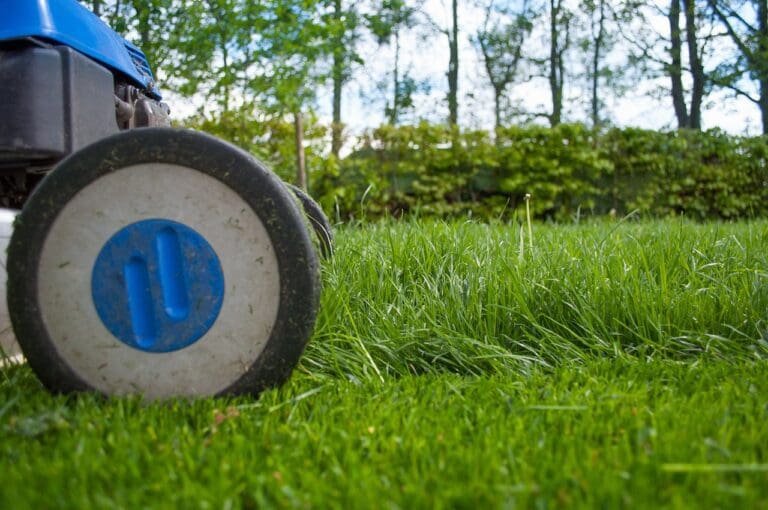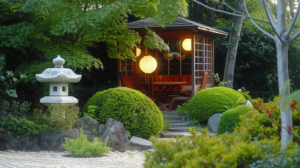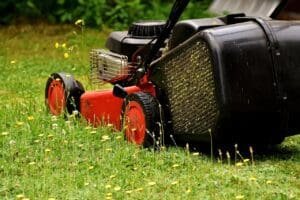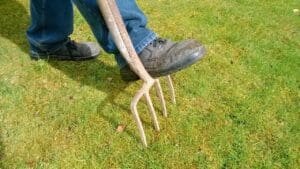Artificial turf has become more and more popular over recent years. This low-maintenance, forever-green option appeals to those who want to enjoy their outdoor space without the incessant upkeep that natural grass often demands. It beckons those who desire a perfect, pristine green “lawn” all year round, irrespective of the weather or their gardening abilities.
However, there’s a controversial side to this coin. Does the ease of care and the year-round beauty (in some people’s eyes) compensate for the possible downsides? This blog post will delve into the intricate maze of artificial turf, balancing its pros and cons, and addressing the big question – should fake grass be banned across the UK altogether?
This post contains affiliate links which means we may make commission from any qualifying sales with no extra cost to yourself.
Understanding Fake Grass
Artificial turf is essentially a carpet of synthetic fibres crafted to mimic natural grass. Its main advantages lie in its endurance against wear and tear, minimal upkeep, and significant water conservation – a notable advantage for individuals with mobility restrictions or those residing in areas prone to water shortages.
However, the synthetic solution is not without its obvious drawbacks. Criticism often stems from the environmental concerns associated with its production and disposal, the hefty price tag that accompanies its installation, and a somewhat drab aesthetic that lacks the unmatched organic charm of a natural lawn.
Environmental Impact

Artificial turf is a petroleum-based product. Its manufacturing process not only utilises non-renewable resources but also leads to greenhouse gas emissions. At the end of its life, artificial turf, due to its non-recyclable nature, typically ends up in landfills, contributing to the global waste crisis.
In stark contrast, natural lawns, while requiring more water and regular upkeep, play a vital role in carbon sequestration, providing a natural solution to combat climate change. Additionally, it fosters biodiversity, offering a habitat to a variety of insects and microorganisms, and upon its life’s end, it decomposes naturally.
Health and Safety Considerations
There are concerns about potential health risks associated with artificial turf, primarily due to exposure to chemicals used in its production. Additionally, it tends to absorb more heat than natural grass, posing a risk of burns during hot weather conditions.
Natural grass, on the other hand, can actively contribute to better air quality by filtering pollutants. For allergy sufferers, a well-maintained natural lawn can even alleviate symptoms, provided it is kept mown to prevent pollen production.
Safety concerns regarding artificial turf include an increased risk of abrasions and injuries due to its harder surface. In contrast, the softer, more flexible surface of natural grass can cushion falls and prevent serious harm.
Economic Considerations
Though the initial investment for artificial turf installation is high, supporters argue that the long-term savings on water bills and garden maintenance make it a worthy investment. However, a transition en masse to artificial turf could have an economic impact on local businesses such as nurseries, garden centres, and landscaping services, which rely heavily on the ongoing maintenance that natural grass requires.
Aesthetic Appeal and Community Impact
Aesthetics are subjective. Some homeowners find the constant green of artificial grass appealing, while others argue that it lacks the authenticity and sensory appeal of natural grass. In the UK we don’t really have strict regulations regarding landscape aesthetics, and a surge in artificial lawns could dramatically alter the visual dynamics of our neighbourhoods.
Alternatives to Artificial Lawns
For those seeking alternatives to artificial lawns, here are a few options you may want to consider:
- Clover Lawns: Clover is low maintenance, needing less mowing and watering than traditional grass. It also stays green throughout the summer.
- Moss Lawns: If your lawn is shady, moss can be an excellent alternative. It requires little maintenance and no mowing.
- Ornamental Grasses: These can create an attractive and varied lawn. Some varieties are drought-resistant and require minimal maintenance.
- Wildflower Meadows: For a more natural look, a wildflower meadow needs less maintenance than a traditional lawn and can support local wildlife.
- Woodland Gardens: If your garden is shaded, consider turning it into a woodland garden with shade-loving plants, rather than struggling to maintain a lawn.
Remember, the right alternative for you will depend on your local climate, soil type, and personal preference.
Final thoughts
The artificial turf versus natural grass debate doesn’t offer a one-size-fits-all solution. However, when we consider the environmental, health, and community implications, for me, it’s obvious that artificial turf should only be used as a last resort.
An informed choice requires an understanding of the broader implications. Perhaps it’s time for regulatory bodies to step in, ensuring that our quest for convenience doesn’t come at the expense of our planet’s health and our own well-being.
Please note: Every effort has been made to ensure that the information contained within this blog post is accurate and up to date. However, practices and knowledge can evolve, and regional differences may apply.
Frequently Asked Questions
Q. How bad is artificial grass for the environment?
Artificial grass is often criticized for its environmental impact. It is made from non-renewable resources and its production involves releasing greenhouse gases. Once artificial grass reaches the end of its lifespan, typically around 10 years, it is generally not recyclable and ends up in landfills, adding to the global waste problem. Additionally, it does not support biodiversity as natural grass does, and contributes to heat islands in urban areas due to its heat-absorbing properties.
Q. What are the health hazards of artificial grass?
Some concerns have been raised about potential health risks associated with artificial grass. For instance, it can get very hot in sunny conditions, posing a burn risk. It’s also a harder surface than natural grass, increasing the potential for injuries. There are also concerns about possible exposure to chemicals used in its manufacture, though more research is needed in this area to fully understand any long-term health effects.
Q. Can artificial grass cause damp?
If not installed correctly, artificial grass can lead to water logging and dampness. This is because artificial turf is not as permeable as natural grass, so water can accumulate on the surface or beneath it. However, with a correctly prepared base layer and proper drainage system, the risk of dampness caused by artificial grass can be minimized.
Q. What are the pros and cons of artificial grass?
Artificial grass has several pros and cons. On the pros side, it’s low maintenance, durable, and retains its green look throughout the year, irrespective of weather conditions. It also saves on water usage, a significant advantage in areas with water shortages.
On the cons side, artificial grass doesn’t support biodiversity, contributes to the heat island effect, and isn’t as soft or safe as real grass. It’s also a petroleum-based product that can end up in landfills after its lifespan. Plus, while it saves on water, it requires cleaning and may need occasional topping up of infill material. Finally, the initial cost of installing artificial grass can be quite high.






